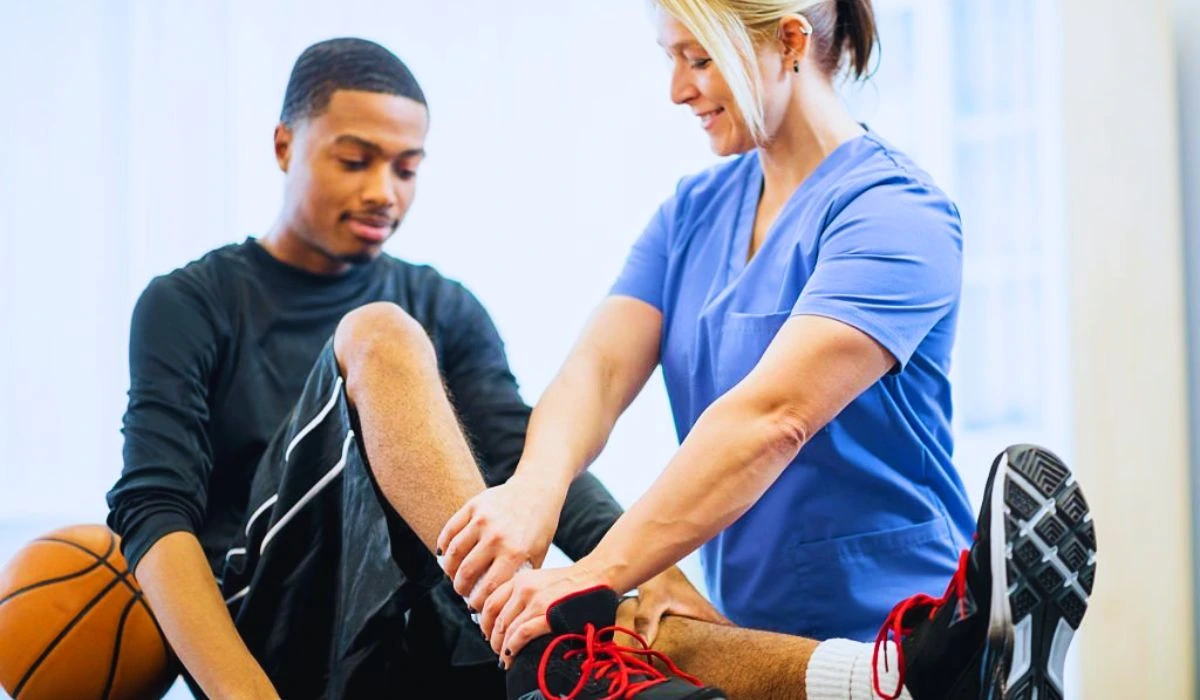It is a common occurrence for anyone active in sports to sustain injuries. While some are minor and recover within a day or two, there are others that are serious enough to cripple an individual for the rest of his or her life. Back sprain/injury, leg injury, and leg muscle sprain are some of the most notable injuries one can sustain when being active in sports.
But do you know the depth of the injury caused by what can be regarded as “high-impact sports?” Well, not unless you are a sportsman (or a sportswoman). This article has, therefore, been prepared with the intent of understanding what high-impact sports are and why they cause injuries.
It also conveys the significance of adopting injury-prevention strategies to avoid injuries during high-impact sports. Suggestions for appropriate injury-prevention strategies and how these can be applied or implemented will be included in this context.
What Are High-Impact Sports, And Why Do They Cause Injuries?

🔹 Understanding High-Impact Sports
High-impact sports and activities are those that put a significant amount of stress (impact) on the knees, hips, and ankles. Weight-bearing joints, as these are otherwise called, happen to be strained by repetitive tasks or activities that can gradually take a toll on their strength, capabilities, and health down the road.
High-impact sports can include anything that involves running, such as soccer, basketball, volleyball, cricket, etc. Though it is common for runners to experience significant issues with their knees, hips, and shins, the extra amount of force that one’s leg bones, and joints take when engaging in these high-impact activities is likely to put them at risk of developing severe knee issues.
Of note, these can even cripple them for the remainder of their lives due to the pain, discomfort, and difficulty experienced therein. This fact has strongly entailed the need to understand the significance of adopting the necessary precautionary measures to avoid getting hurt to the point of sustaining serious injuries when involved in various high-impact activities, exercises, and sports.
It would be worth stating here that unless one undertakes any precautionary measures in these regards, one cannot be spared from any impending injuries that may play havoc with one’s bone health going forward.
🔹 Why Do High-Impact Sports And Activities Cause Injuries?
As stated above, high-impact sports like running, soccer, and basketball tremendously involve weight-bearing joints such as the hips, knees, and ankles. Since these games happen in highly competitive settings, the repetitive straining of the leg muscles and bones is likely to cause injuries, exerting a lasting impact on bone strength.
If not heeded or treated promptly, these are enough to render the knee, hip, and ankle bones highly vulnerable to repeat sprains and fractures. The prolonged time taken to heal these fractures can, in turn, make individuals unreliable for any future sports activities, thus demarking their careers to a significant extent.
While this is a secondary impact and takes place gradually, this has, however, emphasized the seriousness of contemplating strategies that will effectively prevent the occurrence or recurrence of severe injuries and pain to any of the weight-bearing joints specified above.
Also Check: Sports Injury Rehabilitation For Swimmers: Find Out The Expert Tips
Importance Of Injury-Prevention Strategies When Engaging In High-Impact Sports
The discussions made above regarding high-impact sports and their likelihood of causing high-impact injuries have further necessitated the need to devise strategies for preventing sports-related injuries. The points presented below in this regard will thereby help confirm the significance of implementing them.
- Preventing musculoskeletal injuries
- Reducing recurring ankle sprain risks
- Reduction of risks associated with wrist injuries, fractures, and sprains, especially during snowboarding
- Prevention of sports-related concussions that may cause traumatic brain injury
- Preventing knee injuries
- Addressing concerns related to repeated anterior cruciate ligament tears in children, specifically acquired from sports-related activities
While there are many others, it has been felt convenient to include this many due to time and space constraints. However, the points listed above are enough to urge the need to implement future injury-prevention strategies, while at the same time retaining those that are highly essential and relevant.
Methods To Prevent High-Impact Sports Injuries
- Playing the right sport at the right age is crucial to preventing many high-impact sports injuries.
- Since most of the injuries occurring in young children from sports are due to an overuse of their muscles and ligaments, advising them against specializing in one single sport would be a good idea.
- Taking time off, i.e., one day off per at least one week and a minimum of one month off every year, will be enough to relieve the pain, stress, and muscular tension.
- The appropriate wearing of protective equipment like neck and shoulder pads, chest pads, helmets, and face guards (like in cricket) will help prevent major injuries from happening.
- Likewise, proper training to strengthen the core muscles, i.e., back, knee, hip, etc., can, in turn, improve their flexibility, which will further help keep the various musculoskeletal injuries at bay.
- Also, proper techniques when playing, safety precautions, taking regular breaks, and drinking plenty of fluids are applicable methods to try.
Read More: The Role Of Physical Therapy In Sports Injury Recovery
Conclusion
Apart from the methods listed above to prevent high-impact sports injuries, various equipment has also emerged to help alleviate the pain and discomfort caused by musculoskeletal injuries due to high-impact sports activities. These have included braces and wrist guards. Additionally, kinesiotaping has also been found effective in both preventing and treating musculoskeletal injuries.
However, concerns regarding the effectiveness of Kinesio taping in treating the pain associated with these injuries remain, further necessitating the need to explore techniques that will help resolve the various discomforts related to musculoskeletal injuries.